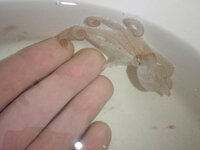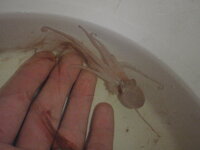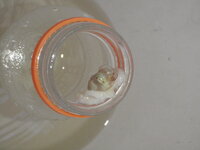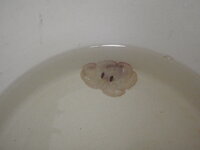Habitat: Caribbean
I have my own guess but perhaps I am seeing something because I want to. I think this is one of two species but would like others to look at the pictures.
Kara said "his/her eyes turned beat red right before it inked ... (kinda creepy)
Odd texture
It inked while Kara was photographing
This is the photo that I THINK provides an answer
I have my own guess but perhaps I am seeing something because I want to. I think this is one of two species but would like others to look at the pictures.
Kara said "his/her eyes turned beat red right before it inked ... (kinda creepy)
Odd texture
It inked while Kara was photographing
This is the photo that I THINK provides an answer





